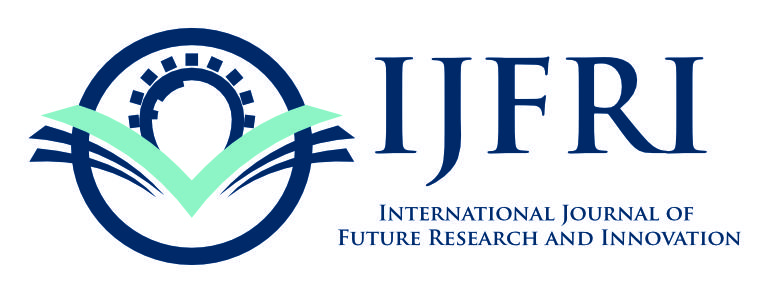Optimization of Genomic DNA Isolation in Date Palm (Phoenix dactylifera L.) for Molecular Analysis.
Main Article Content
Abstract
Molecular marker techniques are essential for cultivar identification and biodiversity conservation of date palms (Phoenix dactylifera L.). High-purity genomic DNA is a prerequisite for PCR amplification, DNA fingerprinting, and sequencing in molecular breeding. This study evaluates the effectiveness of the cetyltrimethylammonium bromide (CTAB) method in achieving high-quality DNA yields suitable for PCR applications. Additionally, a comparative analysis with other existing DNA extraction methods, including silica-based column purification and magnetic bead-based extraction, is presented to highlight the advantages and limitations of each approach. The results demonstrate that the inclusion of sodium chloride (NaCl) (1.4 M) in the lysis buffer, coupled with mechanical grinding using liquid nitrogen and sterile sand, enhances DNA purity without the need for polyvinylpyrrolidone (PVP) or lithium chloride (LiCl). Comparisons with alternative DNA isolation methods highlight the cost-effectiveness and efficiency of this approach. These findings suggest a viable alternative for DNA isolation in date palms, with significant implications for molecular breeding and conservation research
Article Details
Section

This work is licensed under a Creative Commons Attribution 4.0 International License.
All articles published in the International Journal of Future Research and Innovation (IJFRI) are licensed under a Creative Commons Attribution 4.0 International License (CC BY 4.0). Authors retain copyright and grant IJFRI the non-exclusive right to publish, distribute, and archive the work.
How to Cite
References
1. Aljanabi, S. M., & Martinez, I. (1997). Universal and rapid salt-extraction of high-quality genomic DNA for PCR-based techniques. Nucleic Acids Research, 25(22), 4692–4693.
2. Doyle, J. J., & Doyle, J. L. (1987). A rapid DNA isolation procedure for small quantities of fresh leaf tissue. Phytochem Bull, 19, 11-15.
3. Gawel, N. J., & Jarret, R. L. (1991). A modified CTAB DNA extraction procedure for Musa and Ipomoea. Plant Molecular Biology Reporter, 9(3), 262–266.
4. Fang, G., Hammar, S., & Grumet, R. (1992). A quick and inexpensive method for removing polysaccharides from plant genomic DNA. BioTechniques, 13(1), 52–56.
5. Khanuja, S. P., Shasany, A. K., Darokar, M. P., & Kumar, S. (1999). Rapid isolation of DNA from dry and fresh samples of plants producing large amounts of secondary metabolites and essential oils. Plant Molecular Biology Reporter, 17(1), 1–7.
6. Lodhi, M. A., Ye, G. N., Weeden, N. F., & Reisch, B. I. (1994). A simple and efficient method for DNA extraction from grapevine cultivars and Vitis species. Plant Molecular Biology Reporter, 12(1), 6–13.
7. Ouenzar, B., Hartmann, C., Rode, A., & Benslimane, A. (1998). Date palm DNA mini-preparation without liquid nitrogen. Plant Molecular Biology Reporter, 16(3), 263–263.
8. Michiels, A., Van den Ende, W., Tucker, M., Van Riet, L., & Van Laere, A. (2003). Extraction of high-quality genomic DNA from latex-containing plants. Analytical Biochemistry, 315(1), 85–89.
9. Varma, A., Padh, H., & Shrivastava, N. (2007). Plant genomic DNA isolation: An art or a science. Biotechnology Journal: Healthcare Nutrition Technology, 2(3), 386–392.
10. Sharma, A. D., Gill, P. K., Singh, P., & Bhullar, S. S. (2002). DNA isolation from dry and fresh samples of polysaccharide-rich plants. Plant Molecular Biology Reporter, 20(4), 415a–415f.
11. Porebski, S., Bailey, L. G., & Baum, B. R. (1997). Modification of a CTAB DNA extraction protocol for plants containing high polysaccharide and polyphenol components. Plant Molecular Biology Reporter, 15(1), 8–15.
12. Sambrook, J., & Russell, D. W. (2001). Molecular Cloning: A Laboratory Manual. Cold Spring Harbor Laboratory Press.
13. Fang, D. Q., & Roose, M. L. (1997). Identification of closely related citrus cultivars with inter-simple sequence repeat markers. Theoretical and Applied Genetics, 95(3), 408–417.
14. Raza, M. H., Shah, H., & Khan, A. I. (2015). A modified CTAB protocol for DNA extraction from date palm (Phoenix dactylifera L.). Pakistan Journal of Botany, 47(1), 353–356.
15. Wu, J., & Tanksley, S. D. (1993). Genetic dissection of the hybrid sterility in the interspecific hybrid between Lycopersicon esculentum and L. peruvianum. Genetics, 134(1), 169–180.
16. Allen, G. C., Flores-Vergara, M. A., Krasnyanski, S., Kumar, S., & Thompson, W. F. (2006). A modified protocol for rapid DNA isolation from plant tissues using cetyltrimethylammonium bromide. Nature Protocols, 1(5), 2320–2325.
17. Jhang, J. Y., & Kim, T. S. (2002). Simplified DNA isolation method for polysaccharide-rich plants. Korean Journal of Plant Research, 15(3), 181–185.
18. Healey, A., Furtado, A., Cooper, T., & Henry, R. J. (2014). Protocol: A simple method for extracting next-generation sequencing quality genomic DNA from recalcitrant plant species. Plant Methods, 10(1), 21.
19. Paterson, A. H., Brubaker, C. L., & Wendel, J. F. (1993). A rapid method for extraction of cotton (Gossypium spp.) genomic DNA suitable for RFLP or PCR analysis. Plant Molecular Biology Reporter, 11(2), 122–127.
20. Wei, X., Zhang, X., & Yang, Y. (2005). High-quality DNA extraction from green and senescent leaf tissues of Populus tomentosa. Journal of Forestry Research, 16(1), 59–62.
21. Lefort, F., & Douglas, G. C. (1999). An efficient micro-method of DNA isolation from mature leaves of four hardwood tree species Acer, Fraxinus, Prunus, and Quercus. Annals of Forest Science, 56(3), 259–263.

